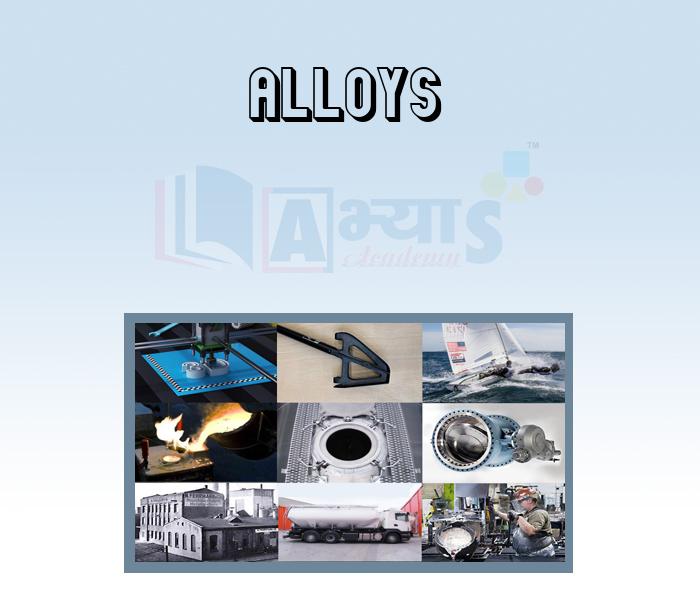Alloys











Alloys
Alloys: Alloy is a mixture of two or more metals (e.g. bronze) or of a metal with small amounts of non-metal (e.g. steel). Alloys have properties different from the constituent metals. It is possible to make alloys having required properties. Table below lists some of the commonly used alloys, their constituents and uses. Common Alloys, Constituents and Uses
Common Alloys, Constituents and Uses
| Alloys | Constituents | Uses |
| Steel | Iron and Carbon | Construction of ships, buildings and vehicles |
| Stainless Steel | Iron, Nickel and Chomium | Utensils, equipment for food and dairy industry |
| Brass | Copper and Zinc | Vessels and fittings |
| Bronze | Copper and Tin | Statues, ships and medals |
| Solder | Lead and Tin | Soldering joints |
| German Silver | Copper, Nickel and Zinc | Utensils and other articles |
| Duralium | Aluminium., Copper, and traces of Magnesium and Manganese | Air crafts and kitchenware |
Students / Parents Reviews [10]
My experience with Abhyas academy is very good. I did not think that my every subject coming here will be so strong. The main thing is that the online tests had made me learn here more things.

Hiya Gupta
8thIt was a good experience with Abhyas Academy. I even faced problems in starting but slowly and steadily overcomed. Especially reasoning classes helped me a lot.

Cheshta
10thI have spent a wonderful time in Abhyas academy. It has made my reasoning more apt, English more stronger and Maths an interesting subject for me. It has given me a habbit of self studying

Yatharthi Sharma
10thBeing a parent, I saw my daughter improvement in her studies by seeing a good result in all day to day compititive exam TMO, NSO, IEO etc and as well as studies. I have got a fruitful result from my daughter.

Prisha Gupta
8thAbhyas is a complete education Institute. Here extreme care is taken by teacher with the help of regular exam. Extra classes also conducted by the institute, if the student is weak.

Om Umang
10thIt was good as the experience because as we had come here we had been improved in a such envirnment created here.Extra is taught which is beneficial for future.

Eshan Arora
8thOne of the best institutes to develope a child interest in studies.Provides SST and English knowledge also unlike other institutes. Teachers are co operative and friendly online tests andPPT develope practical knowledge also.

Aman Kumar Shrivastava
10thAbhyas Methodology is very good. It is based on according to student and each child manages accordingly to its properly. Methodology has improved the abilities of students to shine them in future.

Manish Kumar
10thMy experience was very good with Abhyas academy. I am studying here from 6th class and I am satisfied by its results in my life. I improved a lot here ahead of school syllabus.

Ayan Ghosh
8thAbout Abhyas metholodology the teachers are very nice and hardworking toward students.The Centre Head Mrs Anu Sethi is also a brilliant teacher.Abhyas has taught me how to overcome problems and has always taken my doubts and suppoeted me.
